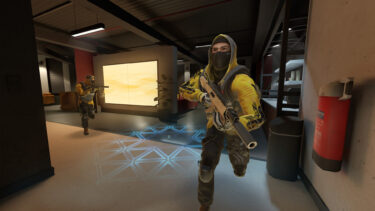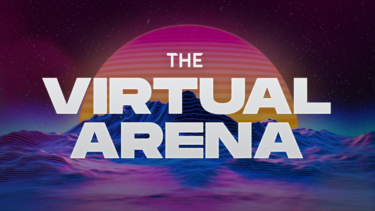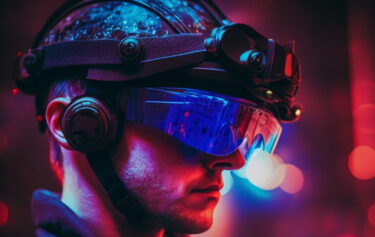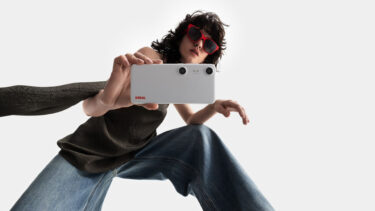The Application of XR into the attractions and amusement landscape is covered by industry specialist Kevin Williams, in his latest Virtual Arena column – looking at the deployment of XR through the latest immersive Projection Mapping technology into the Out-of-Home landscape.
In this latest column for MIXED, continuing our look at immersive XR technology deployed in the Out-of-Home playscape.
Defining XR
The word XR, has become an umbrella term encompassing VR, AR and Mixed Reality (MR), but has been retroactively hijacked to be an abbreviation of “Extended Reality”, (attempts to link it to “Cross”, or even “Extreme Reality” falling by the wayside). The current popularization of XR tracing its adoption back to OpenXR announced in 2017 by Khronos Group, as an initiative in designing an open standard for portable Virtual Reality (VR) and Augmented Reality (AR) apps and devices. And was cemented by the adoption of WebXR that would be announced in 2018 as a device API, also promoting the XR terminology.
Once again, we look at technology that goes beyond just VR headwear and at unencumbered immersive experiences, placing the players into the virtual world. And adding to the list of technologies championing this move in XR, we have “Video Projection Mapping” (VPM). Projection technology has grown in sophistication, supported by advances to the point where it can be employed to become the game.
Before the explosion in popularity of video gaming, Japanese amusement machine manufacturer NAMCO released the game ‘Shoot Away’ in 1977. An electromechanical amusement piece, simulating clay pigeon shooting – the clays represented by a projected target on the panoramic projection screen. Incredibly rudimentary but fun, the projected shooting experience was enough to make the game a hit with arcade players of the time, being one of NAMCO’s first international releases. Fostering a sequel with ‘Shoot Away II’ (1993), and even seeing a ‘Shoot Away Pro’ retro-release by BANDAI NAMCO Entertainment amusement division in 2018.
The use of projection overlays to represent the game environment gathered pace. This was seen with the last gasp of the Laserdisc amusement systems, and the six-player ‘Galaxian³ Theater6’ (1993).
Again, from NAMCO, this vast theater enclosure experience used multiple projection, creating an immersive space battle, able to maximise on the limited computer GPU performance of the time.
Projection Mapping in Attractions
Jump forward to modern conditions, and both projectors and computer graphical performance has achieved incredible levels of fidelity. Especially the growth of laser projection systems.
Not slow to look towards adopting this technology into their attractions, Walt Disney Company and their Imagineers’ created ‘Goofy’s Paint ‘n’ Play House’. One of the first Projection Mapped theme park attractions, with eight players manning launchers called “Toontone Splat Masters”, (mounted cannons) spraying digital paint over a physical space with props, but animated by the projection system, coming to life when hit with the digital paint. The attraction was launched in 2012 at ‘Tokyo Disney Resort’ and became a firm favorite with guests of all ages – so much so that a version of the attraction would open in ‘DisneyLand USA’.
The deployment of “Video Projection Mapping” (VPM) would be used as background effects work occasionally but revived again by the Walt Disney Imagineers with the 2019 attraction ‘Mickey and Minnie’s Runaway Railway’, part of the development of the 30th-anniversary updated ‘Mickey’s Toontown’ at ‘Disneyland’.
This passive dark ride attraction would transport the guest from scene-to-scene with characters and areas employing full VPM with physical elements, to create a very immersive experience.
Much of this now achievable due to massive advancements in protection technology – especially the powerful performance, and digital clarity of the new generation of Laser Projection systems from manufactures like Christie, Panasonic Connect, Barco, Sony and Samsung. But also fed by a new suite of software development tools that allows mapping to be married with the physical elements.
Attractions developer TRIOTECH have created their own interactive projection mapping platform called ‘illusio’ for deployment in their projects. Most recently working on ‘The Hive Break’ walkthrough attraction, in China, employing projection mapped elements.
VPM Gets Active
The latest VPM systems combined with tracking achieved through laser and computer Vision systems, and supported by Machine Learning, have created a new opportunity for interactive entertainment and physical experiences.
One of the best examples is that from Valo Motion with their ‘Valo Climb’ that has players using an actual climbing wall, with interactive VPM game experiences projected onto the wall, with the players movements tracked. An active entertainment experience that offers a new level of engagement, able to be deployed in soft-play, gyms and entertainment facilities alike.
The climbing wall VPM experience would also be seen in 2018 from TAITO, with their ‘NOBORINVADERS’ climbing wall experience, players avoiding blasts while whacking the invaders from space.
Another experience created was ‘ARKINVADERS’ – this time a floor projection, with the players kicking digital balls launched at the hoards of invaders in a physical recreation of the classic. All these games, and others, created as part of the ‘Play! Space Invaders Exhibition’ in Tokyo that coincided with the 40th-anniversary of the classic arcade hit – eventually turned into a travelling exhibition.
The deployment of projection systems in floor and wall-mounted experiences are seen from the likes of OM Interactive with their ‘OMNI’ range of immersive projection systems, that are deployed in schools, malls and day-care facilities. Young children and healthcare have embraced this frictionless technology, with companies like EyeClick and their ‘BEAM’ platforms offering physical activity installed across 9,000+ locations worldwide.
Real-Life Videogaming
The ability to apply VPM, with advanced tracking, to legacy entertainment has been illustrated by a spate of immersive karting platforms. Developed as an indoor electric go-karting experience, with the race environment created by multiple projection, and with the use of tracking, the vehicles can launch virtual items at other racers – a real life “Mario Kart”.
One of the first examples of this was Battle Kart, that has opened some 20-locations across France, Austria, Belgium and Germany. Offering not just the ‘Battle Race’ game experience, but also other action games, based on the karts and projection environment.
Other developers have entered the ring with their version of the concept – most recently we have seen in London the launch of Chaos Kart, engineered by The Ents Inc. With their interpretation of indoor electric AR go-karting, using projection mapping, with multiple game and race style in 75-to-90-minute sessions – placing the player into a real-life-videogame.
The company receiving investment towards rolling out the concept across the United Kingdom, September 2023 seeing the opening of their second venue in Manchester. With plans to expand the number of locations, including Dubai in the UAE.
The ability to create a dedicated space for immersive entertainment has been grown with the use of the latest projection and tracking tech, built also with the need to creator compelling entertainment spaces.
We will speak on social entertainment more in this coverage, but one of the new concepts that will see its second venue opening in the US is Electronic Playhouse. The immersive entertainment space sees 10,000-sq-ft., facility split into dedicated immersive and interactive game rooms able to accommodate from one to 24-players.
Electric Playhouse also includes its own immersive dining experience. All these elements marrying the latest VPM applications. The developers announcing the opening of their second venue in Las Vegas.
https://www.youtube.com/watch?v=https://player.vimeo.com/video/834269604
Amusement Embraces VPM
From all-inclusive VPM attractions towards the application of the technology in a more amusement style presentation. We have seen SEGA Corporation Japan launch in 2010 their ‘Heat Up Air Hockey’.
Developed by Sega Logistics Service, the system offered a two-player air-hockey experience using rudimentary projection mapping for the time, marking one of the first attempts at employing this technology into amusement.
The concept has continued to be developed by other manufacturers, hoping to create a compelling experience. Interactive365 recently launched their ‘AR Air Hockey’ – also offering a two-player platform, though benefiting from the latest projection and tracking technology.
The company is also producing their own projection mapped climbing wall products as well as the projection mapped children’s experience like their ‘Oceanarium’ at Kidspace.
The ability to create VPM that can be combined with existing entertainment systems has driven much development in the field. Amusement manufacturer TouchMagix has created their ‘SPARK’ range of systems.
First employing their VPM platform to create AR bowling lanes, developed in partnership with bowling industry powerhouse Brunswick. Offering interactive projection to augment the bowling experience, launching their ‘Brunswick Spark’ platform.
Building on this experience, TouchMagix has developed their next platform with projection mapped pool.
The ‘MagixPool’ offers a multitude of game elements to the physical pool game, tracking ball movements and offering a new eye-catching experience to the traditional game.
These new AR interpretations of traditional game experience are seen populating the Social Entertainment (sometimes called “Competitive Socialising”) scene. We already mentioned in our feature on “Immersive Enclosures” – the use of projection systems in new-gen amusement, (as with the ‘Immersive Gamebox’, ‘QBIX’ (INOWIZE), ‘PlayNeo’ (Attraktions!) and other platforms), but there are other developments gaining momentum.
The social entertainment facility chain BOUNCE – offering a social ping pong environment with cocktails and food, launched in 2017 their ‘Wonderball’. Specially designed AR Ping Pong (“techno-table”) – with a projection mapped table and laser-tracking of the special balls, using an overhead 4K Optoma projector.
The developer Pixel Artworks creating several games, the whole table supported by UV flood lighting. All to create a compelling and socially engaging enhancement to the traditional game. BOUNCE revealed in 2022 an updated version of the concept in development with ‘Wonderball 2.0’.
More recently, the independent Western partners SEGA Amusement International has represented an AR-based platform using Projection Mapping and AR tracking from 501 Entertainment called ‘SMARTS AR Darts’ – the system projecting onto the dartboard, and tracking the scores of the players, offering unique game modes. Just launched new content for the platform, based on the popular UK TV gameshow ‘Bullseye’ – experiences aimed squarely at the Social Entertainment scene, “Gamification” of the darts experience (adding a simple to play game with digital scoring).
From Ping Pong, Air Hockey, Pool, Darts, and now to Axe Throwing; the addition of AR and gamification to create a more compelling digitally enhanced experience can be seen with Laserton and their ‘AR Axe Throwing’ platform. The projection mapped targets, different game modes, and tracked scoring – all expanding the offering of the experience and adding to the long-term appeal.
Another AR axe throwing platform with projected targets is from Axcitement. Offering seven different games and targets, the gamification of the traditional entertainment illustrating the new level of engagement to the audience brought up on digital gaming. Social Entertainment venues such as Boom Battle Bar now incorporating AR axe throwing and AR darts experiences into their new mix of available activities.
Projection Driving New Immersion
The use of VPM has received wider recognition due to the spectacular marketing and promotional stunts employing the technology, illuminating large buildings and even mountains with digital animations.
With increased projection performance and versatility, the applications have become even grander and more complex. Examples have been deployed within sporting events, projecting onto basketball courts and football pitches.
But with the new examples of the technology, using specialist high-speed tracking technology. We see interactive applications marking and tracking the players and balls – as seen with this demonstration by Moment Factory from 2020.
Currently, we see demonstrations of projection mapping on movable objects (given the acronym of “Pmomo”), as well as being deployed in promotional work in stores and retail events, the technology has also migrated into the theater, and live performance scene. Offering amazing immersion far beyond that achievable with current MR headsets.
The new generation of entertainment spaces now look towards creating “immersive destinations”, employing the latest projection technology towards creating compelling and mesmerizing spaces. We have seen several Virtual Galleries open, using immersive projection, offering “Artainment”.
Along with the art element, we also see “Edutainment”, creating what some define as museum 2.0. This illustrated by the opening of ‘Utopian Garden’, a fully immersive and interactive adventure using the latest projection techniques. The digital art pop-up installation opening in Tacoma, Washington.
And we have also seen the launch of a chain of venues under the Illuminarium brand. Venues using 8K projection systems to map a space with specially developed content, as seen with the launch in 2022 of their third feature experience ‘Space: A Journey to the Moon and Beyond’.
Immersive environments hoping to draw audiences into what are called “sensory experiences”, supplying passive immersion.
As with all things in the immersive realm, it is less about the technology and more about the engagement of the immersive content. An audience wanting more to be involved and to have engagement with the experiences rather than be satisfied with just sitting back passively. And with this, we can expect to see the next generation of this immersive virtual tech break new boundaries of XR engagement.
This concludes the snapshot of VPM sector and how immersive projection married to Gamification is changing the playscape in the out-of-home market. The next look into this technology-rich sector will follow shortly.
Source: Mixed News





